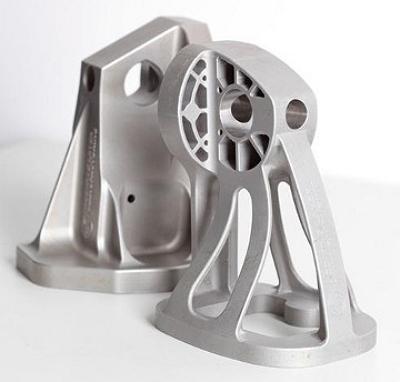The weight of accumulated parts is a critical factor in the aerospace industry’s efforts to build sleeker, lighter and more efficient planes. Shaving every available gram from the equation means manufacturers can save their airline customers fuel and help them cut back on carbon emissions.
Eric Masanet, the Morris E Fine junior professor at Northwestern University in the Robert R McCormick School of Engineering and Applied Science, now says it’s been confirmed that using 3D printed metal parts can reduce the weight of an aircraft – by up to 7% – and those are breakthrough numbers.
The research was funded by the US Department of Energy Advanced Manufacturing Office, and this case study took advantage of aircraft industry figures to analyze life-cycle environmental effects of using additive manufacturing and 3D printing to build lighter, and thereby more efficient, metal parts from cutting edge materials.
In addition to giving those higher performance metals and the parts built from them added value, the case study also found 3D printing technology is critical in reducing manufacturing waste. In practice, it also means using additive processes will conserve thousands of tons of expensive aluminum, titanium and nickel materials.
“The airline industry is an early adopter of 3D printing,” Masanet says. “The main driver is that aircraft require specialized lightweight metal alloys that can be very costly to process.”
 According to Masanet, his team’s analysis also pointed up the fact that 3D printed and additively manufactured components cut the need for energy to produce them by as much as one-third to one-half when compared with conventional manufacturing methods.
According to Masanet, his team’s analysis also pointed up the fact that 3D printed and additively manufactured components cut the need for energy to produce them by as much as one-third to one-half when compared with conventional manufacturing methods.
All in all, Masanet says AM and 3D printing key parts will cut aircraft fuel consumption by approximately 6.4% as well.
It’s all part of what the team says are untapped efficiencies in aircraft manufacturing.
“We have suboptimal designs because we’re limited by conventional manufacturing,” Masanet says. “When you can make something in layer-by-layer fashion, those constraints diminish.”
The case study was published in the May issue of the Journal of Cleaner Production, and Runze Huang of Masanet’s lab was the lead author of the paper. Matthew Riddle and Diane Graziano of the Argonne National Laboratory also contributed to the research.
According to Masanet, conventional methods of manufacturing aerospace parts can be unnecessarily wasteful. As an example, he says producing a 1-kilogram bracket for an airplane using conventional methods could require 10 kilograms of raw material..
While changes to wings and larger structural parts are currently beyond the technology, the researchers say AM is ideal to produce parts like brackets and hinges. One such bracket was reduced in weight from 1.09 kilograms to just .38 kilograms using AM techniques, and that translates to a major savings in a vehicle as large and complex as an aircraft.
Do you know of any other studies or initiatives which are aimed at improving efficiency with AM and 3D printing? Let us know in the AM To Reduce Aircraft Weight forum thread on 3DPB.com.
Subscribe to Our Email Newsletter
Stay up-to-date on all the latest news from the 3D printing industry and receive information and offers from third party vendors.
You May Also Like
Profiling a Construction 3D Printing Pioneer: US Army Corps of Engineers’ Megan Kreiger
The world of construction 3D printing is still so new that the true experts can probably be counted on two hands. Among them is Megan Kreiger, Portfolio Manager of Additive...
US Army Corps of Engineers Taps Lincoln Electric & Eaton for Largest 3D Printed US Civil Works Part
The Soo Locks sit on the US-Canadian border, enabling maritime travel between Lake Superior and Lake Huron, from which ships can reach the rest of the Great Lakes. Crafts carrying...
Construction 3D Printing CEO Reflects on Being Female in Construction
Natalie Wadley, CEO of ChangeMaker3D, could hear the words of her daughter sitting next to her resounding in her head. “Mum, MUM, you’ve won!” Wadley had just won the prestigious...
1Print to Commercialize 3D Printed Coastal Resilience Solutions
1Print, a company that specializes in deploying additive construction (AC) for infrastructure projects, has entered an agreement with the University of Miami (UM) to accelerate commercialization of the SEAHIVE shoreline...
































